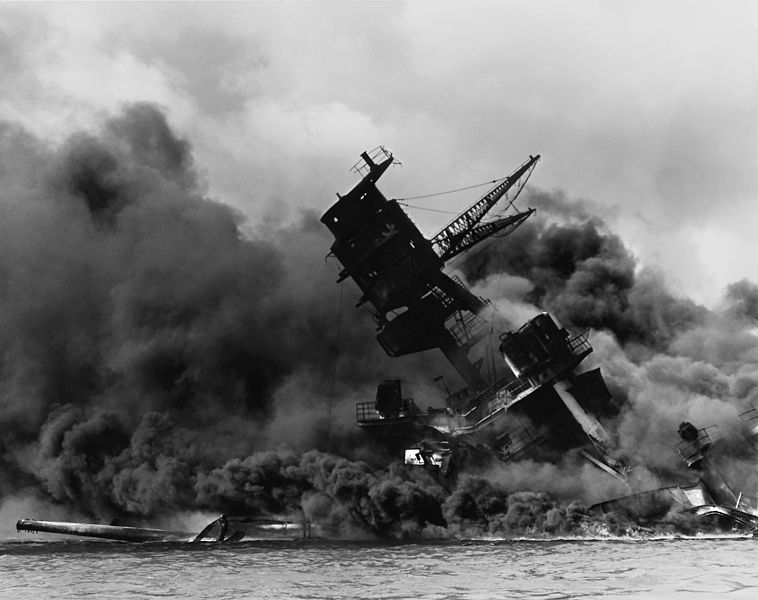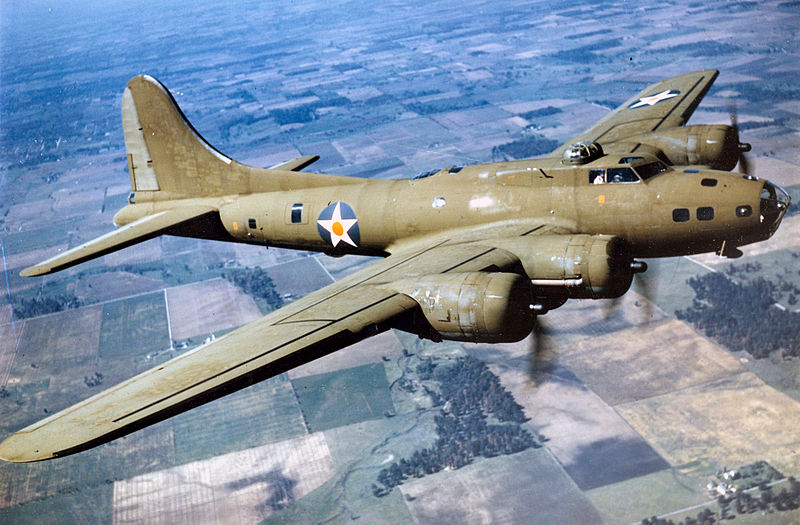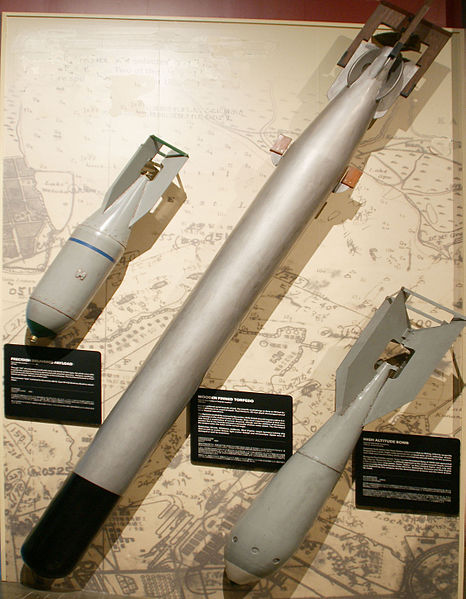
The USS Arizona, destroyed during the bombing.
Today I’m doing something a little different, in recognition of Memorial Day: I’m inviting a guest to speak to my readers. My mother was a child living at Hickam Field on the Hawaiian island of Oahu when it was bombed by Japanese planes on December 7, 1941. Needless to say, she remembers the occasion well, and has offered to write about it here. I’ve added a few sidebar notes for historical context, and edited very slightly for length, but otherwise, these are her own words. Enjoy!
. . .
Jackie Holcomb: My Pearl Harbor/Hickam Story
It has been over 70 years since the Japanese bombed Pearl Harbor, Hickam Field, and all of the other military bases on Oahu (Wheeler Field, Schofield Barracks, Ewa Marine Base, Bellows Field and Kaneohe Naval Air Station). The youngest soldiers and sailors who survived that event are now in their late 80’s and dying at the rate of 1,000 a day. Soon there will be no more veterans of Dec 7, 1941, to tell their stories. Even those of us who were children are old and will soon be gone. I was 8 years old and I remember it very clearly. I saw it, heard it, felt it — I lived it.
Note from Dave: Prior to and during the Second World War what we now know as the US Air Force was a part of the Army, becoming a separate and equal branch of the military only with the National Security Act of 1947. The elevation of the air services to that status was a reflection of the dramatically increased importance of air power in modern warfare, from the initial attack on Pearl Harbor by the Japanese to the carpet bombing of Dresden and the nuclear bombing of Hiroshima and Nagasaki. For the first time in history, nations could extend the reach of military action across distances that would have been impossible only a few decades earlier.

The Boeing B-17 “Flying Fortress”
I was born on Fort Totten, an Army post in New York City, and spent the first six years of my life on Mitchel Field, Long Island, right outside of New York City. Mitchel was a very important Army Air Base with both fighter planes and bombers.
In the fall of 1939 my father received orders to transfer to Hickam Field, Hawaii, an Army Air base that was home to B-17 bombers. Hickam was a new base, built in 1935, and fully operational in 1938. There were eight members of our family: my parents, five girls, one little boy. We boarded an ocean liner, the USS Republic, in New York Harbor and sailed down the east coast of the United States, through the Caribbean Sea, the Panama Canal, and half-way across the Pacific Ocean to Honolulu, Hawaii. It took 30 days on the high seas to make this voyage. My parents were seasick and stayed in the cabin with the two babies, ages 2 and 3, and my oldest sister, age 7, who was also seasick. My other 7-year-old sister (they were twins), my 5 year-old brother, and I, age 6, were not seasick and had the run of the ship. It was a glorious time for us, if not so much for the ones in the cabin.
We had been living in Hawaii for a little over two years when the Japanese bombed us. It was a beautiful Sunday morning and we were supposed to be getting ready for Sunday School (but we were actually having a pillow fight) when we heard an loud noise that rattled the house. We went into the living room to ask our mother what the noise was. She was sitting on a window seat looking out the window. She pointed up into the sky and told us that the Japanese were bombing us. I pictured the Japanese wearing kimonos with embroidered dragons, bridges, pagodas, peacocks, etc, on them. Although I was born and raised on bases and all the men around me wore uniforms, it did not occur to me that the Japanese would also wear uniforms. This memory is fixed in my mind, so later when I learned that it took the top brass in the Army and the Navy some time each to realize that the other was not conducting war games, I marveled at my mother’s knowing right away that it was the Japanese. While the bombs were dropping all around us, she told us about the Germans on the other side of the world at war with most of Europe. What it had to do with us and the Japanese, I am sure I did not know.
Where was my Dad while all this was going on? I have no idea. I am guessing he had to report to his duty station. I wish I had asked him. My mother decided that she should feed us because she didn’t know when we would get a chance to eat later. She herded us into the kitchen and sat us down at the table while she cooked oatmeal. While we were eating, a bomb landed in the street nearby and shattered all the windows on the side of the house that we were in. My mother decided that we needed to get away from the windows, so she took us into the hallway, went into a bedroom and dragged a mattress off a bed and put us all on it and then got another mattress and put it on top of us.
After the bombing had ended, a GI came by in an open Jeep and evacuated us. We always went barefoot in Hawaii and our feet were tough as nails. We walked on broken glass out to the Jeep. While driving off the base, we passed the chapel where we went to Sunday School. It was just a block or two from our quarters. One of the few all-wooden buildings on the base, it was totally engulfed in flames. If the Japanese had bombed an hour or so later, we would have been in the chapel and been killed.
The soldier took us to to a housing development next to the base where servicemen who didn’t qualify for base housing lived, where we had friends. When my mother noticed that the front door was open she told the soldier that he could drop us off and go back to Hickam. We went through the house and out the open back door, but found no one. We had another friend who lived nearby on the highway, so we ran down and banged on the friend’s door, but there was no answer. A man in the duplex next door took us in and gave us corn flakes.
To this day I do not like oatmeal or corn flakes.
Later, we went into Honolulu to stay with Hawaiian friends there. Everyone was getting paranoid by now: we were warned to be very careful what we said because there were thousands of Japanese around and they could be spies. We spent several days in Honolulu before we were allowed back on base, since our quarters had to be fixed up, broken windows replaced, blackout shades installed, bomb shelters built.
Life did not return to normal. Martial law had been declared. Soldiers and sailors were shooting at practically anything that moved. (Anti-aircraft guns actually shot down several of our own fighter planes flying in from the carrier, Enterprise.) There were 40 explosions in Honolulu and only one of them was caused by the enemy. The rest were caused by our own anti-aircraft guns. Air raid shelters were hastily dug; gas masks were issued to everyone. There were frequent air raid drills. For years afterward, I went weak every time I heard a siren of any kind. There was no school. All public buildings on the base and even off-base were commandeered for headquarters and other essential offices.
Note from Dave: The fragment from the exploded bomb was a family heirloom for forty years, until my mother’s oldest sister decided that she, as oldest, should have it. She promptly lost it, and it has never been found.
If a plane is flying too low when it drops the bomb, the bomb may not have time to activate; or may not land right; or may simply be a dud. For several months, unexploded bombs were discovered and brought to designated demolition pits to be blown up.
One such bomb landed in our house while we were in it! We didn’t know it was there until my parents were packing to go in late February, 1942. My father went in to a storage closet in the hallway to get something and saw a hole in the roof; he reached up to the shelf and found a bomb. He took it to the demolition pit and when it was blown up, he kept a piece of it for a souvenir.

During this time, access to the military bases was restricted. Since we lived on one, we were allowed on it, but I don’t think we left it at all until we were evacuated back to the states in late February or early March 1942. There was no Christmas: we had no Christmas tree, no presents.
All kinds of sailing vessels were put into use to evacuate the dependents of servicemen. Some returned to the States on ocean liners or cruise ships, while others returned on Navy ships. We were among those who returned on a Navy ship. Ours was a minesweeper from the First World War. My father could not come with us, so my mother had to travel alone with six children, ages 4 through 9. We sailed for eleven days from Honolulu to San Francisco, through waters haunted by Japanese submarines: we had to wear life jackets the entire time we were aboard the ship, and we had frequent air raid drills. We slept in the crew’s quarters in bunk beds that were three tiers high.
Upon arriving in San Francisco, we were processed, and put on a train to Boston, my mother’s hometown, a four-day journey. My mother’s family met us in Boston, and we stayed there until my father returned home in May, having been transferred to Grenier Field, in Manchester, New Hampshire. I spent most of the rest of my childhood in my father’s home town of Rollinsford, New Hampshire. During my senior year in high school, the tenth anniversary of the attack on Pearl Harbor, we were shown a film of the attack. That was the first time I had seen anything about it since experiencing it in person. I remember feeling light-headed and faint. I also saw something that was missing from my memory of that fateful day: smoke, lots of smoke. In my memory, in spite of the fact that there were buildings and ships and planes on fire and surely lots of smoke, my mind blocked out the smoke and I saw everything against clear blue skies.
( I should note that Pearl Harbor and Hickam Field were adjacent to each other. They were separated by a chain link fence. We used to crawl under the fence to watch the ships come and go. That fence is now gone and the two bases are now one: Joint Base Pearl Harbor-Hickam. We could see the destruction of the ships as well as the destruction of our planes. The Japanese hit our Army air bases first before they hit the ships in Pearl Harbor.)
My father, Chief Warrant Officer George T. Lord, Sr, served in the Army Air Corp/United States Air Force for 34 years, retiring in 1950. Three of his daughters followed in his footsteps and served in the USAF, including me. My husband (Dave’s father) was in the Air Force for over 20 years and served in Vietnam.
* * *

Leave a Reply